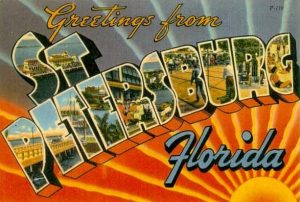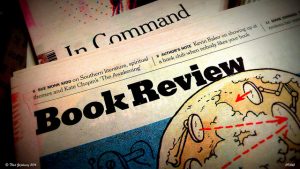Business
Photo by Susan Spann
Happy Holidays!
‘Tis the season . . . to stay off the copyright “naughty list” . . . so here are some tips for avoiding copyright infringement—not only through the holidays, but all throughout the year:
SONGS (AND LYRICS) ARE PROTECTED BY COPYRIGHT
During the holidays, it’s tempting to blog or post the lyrics to favorite carols or celebratory songs—not only on your website, but on Facebook and other social media sites as well. Unfortunately, reproducing lyrics, or poems, in their entirety often violates U.S. copyright law, because lyrics and poems are protected by copyright until they enter the public domain at the expiration of the copyright term.
Posting an excerpt is often permitted under the “fair use” exception to copyright law. However, despite what you often hear online, there is no absolute “fair amount to use.” Popular myths like “two [or five, or six] lines is always okay” are just that: myths. In reality, there is no “bright line” test for copyright infringement. The actual legal test involves the evaluation of four different factors based on the specific “facts and circumstances” of the use.
If you want to share a favorite song or poem, you’re better off quoting the title, or a line or two and then sharing a link to an authorized website that reproduces the work with permission from the copyright holder, or to a video showing an authorized performance of the work.
RECIPES ARE NOT PROTECTED BY COPYRIGHT…EXCEPT WHEN THEY ARE.
Copyright law protects creative expression, but does not protect “functionality” or “facts.” Ingredient lists and basic, functional steps to combine the ingredients in a way that creates a specific type of food is generally considered a functional process, for which copyright is thin (and sometimes, nonexistent). Generally speaking, that means it’s OK to share a recipe.
In fact, U.S. courts have ruled that recipe ingredient lists are merely “statements of facts,” which are not copyrightable, and that factual parts of the recipe’s directions (meaning the instructions regarding combination of the ingredients and the manner in which they’re cooked) are not copyrightable either.
However, creative portions of recipes – including the way the instructions are given and any anecdotes, “tips and hints,” and humorous asides are copyrightable. In other words: you generally can’t reproduce a creatively-worded recipe verbatim, especially if you try to claim it as your own. That said, you probably can share a recipe, translated into your own words, as long as you stick to the functional elements and write your own hints, tips, and “bonus material.”
But Please Remember: in recipes, as in life, ethics matter. While it may be “legal” to strip down and reproduce someone else’s recipe without attribution, it’s not very ethical. If you love a recipe someone else created, it’s better to share your experiences making it (with photos!), and also attribute—perhaps even with a link to the source. You could also share the ingredient list and instructions, and link to the source for tips and creative content. If you have no way to offer a link, it’s also nice to mention the name of the person who created the recipe (if you can).
Read MoreI’m writing this at 11:15 p.m. in a hotel room in Dallas, in a bed that is not my own. I meant to be asleep 15 minutes ago, and then I realized that—even though I’d written this on my planner 3 days this week!—I forgot to write today’s post.
It’s been a year of every type of emotion imaginable. A year of so much writing. So much traveling. So much book touring (almost non-stop) for Everyone Knows You Go Home since it came out in March. So little is actually in our hands when a book releases, so I told myself earlier this year that I would do everything I could do for it. For me that translated to doing events. Meeting readers. Crashing at friends’ and family’s places all across the country and sometimes, oftentimes, being home no more than a week or two at a time.
This is the dream, right?
Kinda.
Things that make it absolutely beyond worth it for this introverted homebody who would rather be writing in bed:
The young mom in California who brought her young son to my reading because he’d never met an author before…and getting a note from her the next day telling me how her eyes had teared up hearing her boy telling her grandfather all about it later that evening.
Having readers ask me to make their book out to their mom. A book that I wrote as a gift to my mom…becomes a gift to theirs.
Standing-room only crowds full of loved ones.
Standing-room only crowds full of strangers.
Three-person crowds on a cold and rainy day—and pulling up a chair and just chatting.
Hearing my literary hero (the author who inspired me to write fiction!) introduce my book before a reading using words like masterful and magical (how is this real life?!).
Read MoreOn Thanksgiving, I celebrated 30 years since the sale of my first book. It’s a crazy milestone and made me consider this writing and publishing life with a sense of bemusement. To celebrate, I have collected 30 things I’ve learned in those three decades.
1. Persistence is more important than talent.
2. Be nice to everyone. It’s a very small world. The meek editorial assistant of today will one day be running the prestigious imprint you most want to break into.
3. No one actually knows what talent means.
4. Don’t compare yourself to others.
4. Don’t buy into your own press. There’s nothing more obnoxious than a writer who swans around in a perfume of her own self-importance.
5. Learning never stops—which is one of the best things about the writing game. No one can possibly understand all of it.
6. A great agent will be your best ally—and the relationship can last as long as a marriage. I’ve been with my agent Meg Ruley for 20 years.
7. A bad agent is worse than no agent at all—by far.
8. ALL writers need good editors. I plan to write an entire blog on this very subject in the near future—editors are enormously important to creating your best work, and creating those relationships can make you a much better writer. No book should enter the world without editorial eyes. Period.
9. Some books will do better than others for absolutely no reason you can fathom.
Read MoreAs your book’s publication date approaches, it’s natural to turn to the pros involved in its promotion — your in-house publicist, the independent PR firm you’ve hired, or both — and ask:
“What can I do to help?”
After all, there is so much to do! And participating in the process can bring a sense of having an iota of control over this overwhelming and frankly, often quite frightening, journey.
In truth, there are a million things you could do. But while it might make you feel good to get hands-on with this project, many things might not actually help. Reaching out to every distant friend or connection who knows somebody at a magazine or TV station to ask if they can cover your book, to cite just one example, won’t help much at all, because those efforts are not well-targeted.
There are also a number of things you should be doing no matter what, such as staying on top of your social media (Instagram in particular is becoming the new it place for book promo) and organizing a launch event. But while these are all good for your book’s visibility, they don’t directly help your publicists with their job.
So what does?
Lately my team and I have been noticing a trend that’s given us one clear ask of our authors. Fewer and fewer people in the media are actually reading the books we send them. I know, it’s disappointing. But people in the media only have so many hours in the day, just like the rest of us. And more often than not, they have a whole stack of books for review on their desk. Getting to your book might feel urgent to our team and to you, but for the reporter, it’s just another multi-hundred page reading project they need to undertake.
Read MoreYou would not want me to advise you on what to wear, but if you want to design a good-looking DOCX, PDF, or EPUB, I’m your girl.
And if you’ve ever wished Scrivener had Microsoft Word-like styles, get ready to rejoice, because Scrivener 3 has replaced the old Presets function—which offered formatting shortcuts without any memory—with Styles. *cue balloons and confetti*
Okay, great, but what exactly are styles?
Introducing Styles
Styles are memorized font and/or paragraph settings that act as a shortcut to quickly change the format of a section of text.
For example, if the characters in your novel often communicate via text message, you might want different font and paragraph formatting to denote the message text. Rather than format each instance manually, you could set up a style and then apply that style to the desired text with one click.
So far, that’s the same as the old presets. Here’s where it gets good.
There are two key benefits of the new Styles function.
So, if the style you chose for your characters’ text messages looks great in PDF, but not so much in ebook, you can quickly change that style’s appearance in the Compile settings without modifying the original text or style.
I had a great analogy about jeans and T-shirts and high fashion—and a fabulous alternative analogy about Superman changing in a phone booth—but I’ll spare you.
Understanding When to Use Styles
Unlike Word, where a style is applied to every part of your manuscript, even the body text, Scrivener’s styles are meant for formatting exceptions.
The body text and chapter headings can be formatted when compiling, so you only have to style sections of text that need to look different from the rest of the document.
We already discussed using a style to denote text messages within a manuscript. Here are a few other examples of instances where you might want to use a style:
Creating a Style
If you find yourself wanting to apply the same format to portions of text throughout your manuscript, you can create your own style. Here’s how:
TIP: Styles you create are only added to the current project. However, you can import the stylesheet from another project via Format>Style>Import Styles.
Read MoreFlickr Creative Commons: Amtec Photos
During the early days—correction, decade—of my writing career, before I had either an agent or a publishing deal, I often felt a kind of desperation. When would it finally be my turn? When would I see my work in print?
Would my day ever come?
I wrote, I researched agents and publishers, I pitched and queried, and—like everyone—I received rejections. Rejections upon rejections, until I almost dreaded opening my email for fear of finding another missive that began, “Although I enjoyed your work, I’m afraid I just didn’t love it quite enough to take a chance in this difficult market . . .”
At times I felt tempted to stop researching “fits” and simply adopt a shotgun approach in the hopes of finding any agent or publisher willing to take a chance on my stories.
Fortunately, twenty years of experience as a publishing lawyer stayed my hand. Because, despite the temptation, I knew that having no agent and no publishing deal is better than having a deal I would later regret.
The same is true for you.
Before signing a contract with an agent or publishing house, you must take off the emotional artist hat and evaluate the offer with a non-emotional, business manager’s eye. Consider every aspect of the deal. Does it make business sense? Does it fit your plans and desires for your overall career? For where you are now, and where you hope to go?
Beyond that, take the time to consider these important factors:
Read MoreWhen your book launches, you naturally have a vision of where you’d like it to go and what you’d like to see happen. Reviews, interviews, readers, sales… Maybe fame and fortune! (Truth be told, many of us do harbor this dream deep down inside.) Yet, whether this vision is clear or blurred around the edges, a part of you knows that realistically, it may not take the exact shape you hope for in the end.
If you’re taking proactive steps to promote your book, staying grounded in this reality takes on a whole new meaning. After all, setting up a plan usually starts with laying out specific goals, then writing up — and plowing through — the to-do list that will bring them to fruition. Should you decide to hire a marketing or PR pro to help, the word “realistic” can easily lose its meaning altogether. Now, there’s money on the table. You’d like it to buy you exactly what you want.
As one providing these marketing and PR services, I see what often happens next: the vision morphs into a veritable checklist of desired outcomes. Specific events to speak at, specific media outlets where coverage should happen, specific social influencers who should be convinced to send out a tweet.
How I wish it were so easy! The truth is, book PR can be as messy and unpredictable as a first draft. It’s very much an art, not a science. The process is a lot like querying agents: we make hit lists of people to contact, draft press releases and email pitches that we tailor in as much as possible to specific individuals or groups, and send them out. Despite follow-up and pavement pounding, often our efforts are greeted only with radio silence.
In working on campaigns, my wonderful team and I always have our own wish lists and hopes for each book. There may be a particular news site we see as a perfect match for a specific novel we’re promoting. Or a radio show we would love to see interview this novel’s author. But even in cases where we have a strong hunch that coverage will pan out, the odds are fairly low that it will.
But there’s a beautiful flip side to this: even as we get the silent treatment from the outlets and people on our wish list (including from people we know personally), we inevitably wind up getting interest from all sorts of other wonderful outlets we had no expectations for at all. Those interviews on MSNBC, NPR’s On Point? Those articles in Marie Claire or The Washington Post? They always come as a huge, and thrilling, surprise!
Which brings me back to control. Focusing too much time or energy on a checklist of desired outcomes can actually impede your PR or marketing pro’s efforts to do what it takes to generate wonderful surprises. If an author implores us to keep trying The Today Show, for example, we may not have the bandwidth that allows the […]
Read MoreFlickr Creative Commons: Thad Zajowicz
These days there are so many ways of promoting a book—yet also so many chances of that book not being noticed at all in the flood of promotion that washes over people daily. So as an author, what do you do? In this post I’m listing a few things that have worked—and not worked—for me. These are very personal observations of course; you may have had a totally different experience.
What’s hot:
Cover reveals on social media—accompanied by an intriguing ‘tag.’ These can start a buzz well before publication.
What’s not:
Book trailers on You Tube or similar channels. Heaps of fun to make but in terms of effects on sales, pretty much nil. You don’t get half as many people looking at them, compared to cover reveals. However, as long as they don’t cost you heaps of money and time to make, there’s no reason to not do it as it can be a nice adjunct.
What’s hot:
Interviews with local radio stations—a brilliant promotion, in my experience, although that may be because at our local radio station there are at least two presenters interested in books and publishing. They and their producers are very keen on local publishing/literary news stories. I have had many people over the years say they went to their local bookshop to find a book I’d spoken about on radio. If you have a similarly engaged presenter on local radio, cultivate them; it’s really worth it.
And by the way in my experience local TV can be good but is hard to get on board.
Read MoreIn the publication world, there’s a tremendous amount of focus on the publication date as THE time for publicity and promotion. I’ve seen authors throw up their hands the week after publication, when media interest is just starting to trickle in, and say, “I guess we struck out.”
As I’ve mentioned here before, book promotion and publicity take time. It can often take months for an article or review to appear. But even though it’s ideal to get promotion efforts started before the big on-sale day, the sky’s the limit as far as what can be done, and what can happen, even long after that day.
My friend and literary idol Anjali Mitter Duva is a glowing example. Her debut novel, Faint Promise of Rain, released in October of 2014. Since then, she has devoted herself tirelessly to promoting it via traditional media, social media, public speaking engagements (including the occasional dance performance related to the book’s plot) and much more. Last year, her efforts led to the fulfillment of a dream: a foreign rights deal with French publisher Editions Tallandier. The French edition, Adhira, fille de la pluie, released in France (where Anjali grew up) this past May – almost 4 years after the U.S. publication. Anjali’s deep commitment to long-term promotion played an important role in this wonderful turn of events.
What did she do? How did she do it? I’m thrilled to have Anjali join us today to talk about her incredible journey, and share a number of extremely handy and insightful tips: One of my favorites: “know that you’re in it for the long haul and make plans that are slow, steady and sustainable.”
Welcome, Anjali!
SB: From the very start, you had a clear vision of what you wanted for Faint Promise of Rain. Can you share that with us?
AMD: When I started to write Faint Promise of Rain, way back in a previous era, I already knew I was in it for the long haul. You see, I planned from the start to write a set of four related but free-standing books, all historical novels with dance and India at their center, yet all set at different times and contexts in history. FPR was to be the first. I think some of this long-term planning comes from my background as an urban planner working on infrastructure projects: very long projects with frequent cost overruns and schedule changes! This long-term vision is what set the tone and pace for my promotion efforts: slow, steady, sustainable. My idea was to build a loyal, strong readership and following, because I knew (at least, I hoped, and still do) that people who enjoyed my first book would likely enjoy my next three as well. But these are historical novels that take, for me at least, years to research and write. So my approach had to be one I could sustain–financially, logistically, energy-wise–over time. Years, if not decades. Five […]
Read MoreBeyond a basic orientation to the software, what’s the number one thing people want help with in Scrivener?
Compile. No contest.
In April, I introduced Scrivener 3’s new approach to compiling (exporting) with a post about section types. Section types are foundational to the new compile feature, so if you need to bone up on the topic, I recommend you start there and then come back. (Or at least check it out later.)
Ready? In this second installment on compiling, I’m going to help you export your manuscript to a Word document, but the process is similar for other types of output.
Why might you want to compile to a DOCX file?
TIP: DOCX files are based on Rich Text Format (RTF), which is compatible across more word processors, and may do a better job of exporting images, lists, and tables than DOCX. RTF is also best when exporting for Apple Pages. If you’d prefer to create an RTF, choose Rich Text (.rtf) in step 2 of “Choosing Your Format” below.
Whatever your reason, you can create a lovely DOCX without too much fuss. I promise. Before you start, be sure you’ve set up your section types under Project>Project Settings>Section Types.
Choosing Your Format
The format determines what the final output will look like, including the margins, fonts, line spacing, first-line indents, chapter headings, scene dividers, and paper size. For this example, we’re going to choose a submission-style format.
Adjusting the Look
If you’ve never assigned section layouts for this format, you’ll see a yellow box in the Section Layouts column (center) warning you about it. Even if you have, you’ll want to ensure they’re correct for the current project.
The following image shows common elements of a section layouts “tile” and what they represent. I selected this layout because it shows most of the possible elements, but this one would work best for those who do not use chapter folders, and have one document for each chapter.
To assign a section type to a section layout, do the following.
Read More



















